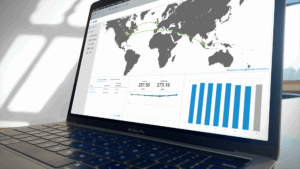
In its most basic definition, multi-tenancy is an architecture in which a single instance of a software application services multiple customers, or tenants. Multi-tenancy can be economical because software development and maintenance costs are shared.
Additionally, with a multi-tenancy architecture, the provider only has to make updates once in order to share them with all of its ‘tenants.’ A software-as-a-service (SaaS) vendor, for example, can run one instance of its application on one instance of a database and provide web access to multiple customers. In such a scenario, each tenant’s data is isolated and remains invisible to other tenants. In this way customers do not share or see each other’s data.
For those companies considering public clouds or partnering with a provider to access them, IT managers need to understand the degree of multi-tenancy supported by the vendor they are considering.
In the SaaS space, you typically share resources like servers, heating, cooling, security and more. A benefit to this arrangement is not having to provision or manage any infrastructure or software above and beyond your own internal resources. This enables you to get back to what you and your business do best on an everyday basis, instead of spending cycles managing and maintaining a lot of hardware and software.
Multi-tenancy also allows SaaS vendors to efficiently service everyone from small customers, whose scale simply doesn’t warrant dedicated infrastructure, to large enterprises that need access to the cloud’s virtually unlimited compute resources. One of the keystone features of Cloud known as elasticity — the ability to scale up and down based on current requirements demanded by the business — is a benefit of multi-tenancy. Of course, this can be accomplished in a single architecture as well, just not as efficiently and on a far smaller scale.
More directly, multi-tenancy allows for more efficient use of IT resources. It requires less upfront infrastructure procurement (e.g. CAPEX) and saves resources dedicated to ongoing management and upgrades.
The only architecture for true SaaS
These “efficiencies” are brought to bear by Larry Aiken in his book “Why Multi-Tenancy is Key to Successful and Sustainable Software-as-a-Service.”
Aiken writes, “The ‘true’ multi-tenant application is the de facto architecture for the highest level of SaaS efficiency. With this approach, all application infrastructure is shared with a single logical instance of the database, and the business logic is also leveraged across all users.”
For Aiken the obvious conclusion is that ‘true’ multi-tenancy is a requirement for true SaaS. Other industry experts agree that multi-tenancy makes the most of the public cloud environment and therefore is the ideal architecture for SaaS, including Bob Warfield and Phil Wainewright.
“What would an app look like if it was built from the ground up to live in the Cloud, to connect Customers the way the Internet has been, to be Social, to do all the rest?” writes Warfield. “Welcome to SaaS Multi-tenant.”
Wainwright expounds on those benefits: “Multi-tenancy benefits enormously from the magic of something I call collective scrutiny and innovation. When hundreds or even thousands of other businesses are using exactly the same operational infrastructure, all of them benefit from each of the different ways in which they’re challenging and stretching that shared infrastructure.”
To summarize and bring things back from the more philosophical, the basic benefits of multi-tenant SaaS are:
Easy Upgrades
Instead of a vendor needing to update every instance of their software across a large number of servers, they are able to update a single, central application or codebase and have the changes instantly available to all users. With a multi-tenant application the process for spinning up a new cloud and application on behalf of a new customer is incredibly easy and can be done very quickly.
Easy Customizations
With multi-tenancy based applications you can provide an additional layer to allow for customizations while still maintaining an underlying codebase which remains constant for all users, including of course, all new customers.
Ongoing Cost Savings
Multi-tenancy speeds up upgrades, saves time (and also cost) but in addition the server / cloud requirements for a multi-tenancy application are much less. No dedicated set of resources must be configured and depending on your architecture can be a very minimal environment. The opportunity to save money takes many forms and becomes greater as the application scales up. This reduces the cost of doing business for the vendor and savings can be passed onto customers.
Signiant is a pioneer in multi-tenant SaaS for accelerated file transfers, creating the first and only true SaaS solutions that can quickly move any size file, anywhere. We utilize a multi-tenant architecture in both of our SaaS large file acceleration solutions, Media Shuttle and Flight. Media Shuttle enables person-to-person transfers, while Flight accelerates large files into and out of cloud storage such as Amazon S3 and Microsoft Azure.

